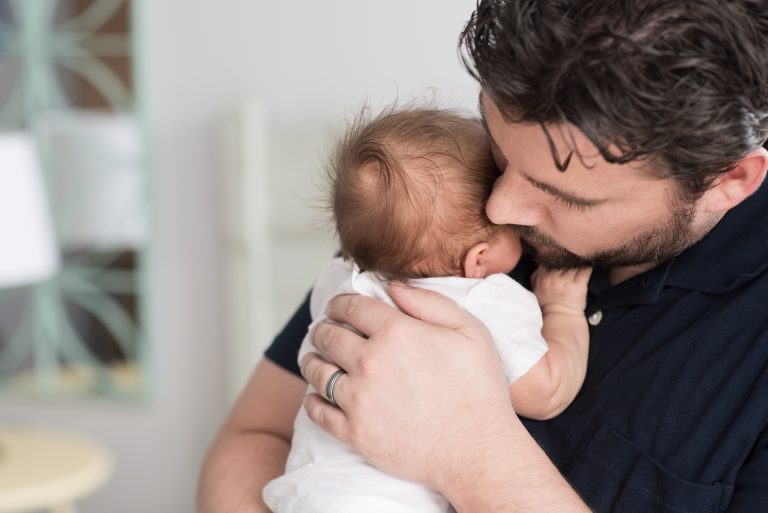5 Things I Wish I Knew During My Third Trimester

From a Doula & Childbirth Educator Who’s Been There
The third trimester is a mix of magic and mayhem. You’re counting baby kicks, bouncing on a birth ball, and wondering if it’s normal to cry because you dropped your sandwich (spoiler: it is). As a longtime doula and childbirth educator—and someone who’s supported hundreds of families right here in North County—I’ve walked this road both personally and professionally.
If you’re in the thick of weeks 28 to 40 (and beyond), here are five things I really wish I had known during my own third trimester. Consider this your doula-approved survival guide, backed by evidence and sprinkled with real-life wisdom.
1. Your Body Is Doing Olympic-Level Work
By now, you may feel like you’re moving slower, breathing heavier, and getting winded from what used to be a casual Target run. That’s not just “pregnancy fatigue”—your body is in full-on production mode.
What’s happening:
- Your blood volume has increased by about 40–50% to support the placenta and baby.
- The hormone relaxin is softening your joints and ligaments in preparation for birth.
- Your uterus has grown from the size of a pear to roughly the size of a watermelon (!).
Why it matters: According to the American College of Obstetricians and Gynecologists (ACOG), all of these changes are part of the natural, necessary prep for labor and delivery. So if you’re feeling a bit like a superhero in slow motion—you’re not wrong.
What I wish I knew: That rest is not laziness. Slowing down is an act of preparation. I would’ve stopped apologizing for napping and embraced the art of doing less.
2. Braxton Hicks Are Not Just “Fake” Contractions
You might feel tightness in your belly that comes and goes—those are Braxton Hicks, or “practice contractions.” They can be irritating, sure, but they’re also useful.
What’s happening:
These mild, irregular contractions help tone the uterine muscle and improve blood flow to the placenta. Some research suggests they may help the cervix begin softening (effacing) in late pregnancy.
Why it matters: Think of Braxton Hicks as your uterus going to prenatal yoga. It’s preparing, stretching, and getting familiar with the rhythm of real labor. These contractions don’t typically dilate the cervix but are part of the body’s natural pre-labor routine.
What I wish I knew: That I didn’t need to “do” anything. I used to worry I was missing a sign or needed to time every one. Instead, I could have just hydrated, breathed through them, and trusted that my body was warming up for the big day.
3. Your Energy Is Precious—Guard It Like Gold
In the final weeks of pregnancy, everyone suddenly wants a piece of your time and attention. Baby showers, work deadlines, visitors, texts asking “any baby yet?”—it’s a lot.
What’s happening:
Your nervous system is in a beautifully heightened state. You’re likely experiencing “nesting” behaviors and craving more control over your environment. This is instinctual—your body and brain are shifting to protect your space for birth and bonding.
Why it matters: Studies show that elevated stress in late pregnancy can influence how labor unfolds. One study in The Journal of Psychosomatic Obstetrics & Gynecology found that high maternal stress correlated with longer labors and increased medical interventions.
What I wish I knew: That “no” is a complete sentence. I would’ve prioritized my peace, asked people to wait to visit until after baby arrived, and given myself permission to unplug without guilt.
4. Pack Your Hospital Bag for Comfort and Confidence
You’ll find dozens of packing lists online, but many forget the most important part: making you feel safe, grounded, and cared for.
What’s helpful to include:
- A birth playlist or wireless speaker for calming sounds.
- Your favorite essential oils (lavender, peppermint, or citrus work well).
- A cozy robe or wrap that makes you feel held.
- Snacks—yes, even if your provider says you might not eat during labor, you’ll want them for early labor or after birth.
- Something to wear for skin-to-skin time that’s easy to open or slip off.
Why it matters: Research shows that comfort items and sensory cues can support the release of oxytocin—the hormone that powers labor contractions and promotes bonding.
What I wish I knew: That I could create a birth space that felt like me. You don’t have to leave your personality at the hospital doors.
5. Labor Probably Won’t Start the Way You Expect
We’ve all seen the dramatic water-breaking-in-public scenes in movies, but labor is often far more subtle in real life.
What’s normal:
- Cramping that feels like menstrual pain
- Low backache or pressure
- Irregular contractions that come and go for hours or days
- Mucus plug loss or light spotting
- A sudden urge to clean everything (hi again, nesting instinct)
Why it matters: Only about 10-15% of labors begin with a gush of water. Many people experience prodromal labor, where contractions start and stop before establishing a rhythm. It can be frustrating—but it’s totally normal.
What I wish I knew: That early labor is not a sprint—it’s a rest and recharge phase. I would’ve stayed home, rested between contractions, and waited for things to pick up before rushing in.
Final Thoughts: This Phase is Powerful, Messy, and Beautiful
At Babies in Bloom, we’ve seen it all—the excitement, the anxiety, the snacks eaten in bed at 2 a.m. The third trimester is a wild ride, but you don’t have to go it alone.
Whether you’re preparing for a hospital birth, a home birth, or something in between, our team of doulas, lactation consultants, and baby gear experts are here for you. Stop by the boutique for comfort items, sign up for a birth class, or just chat with someone who gets it. We’re honored to be part of your village.
Boutique Website: https://babies-in-bloom.myshopify.com/
Boutique Address: 127 Main Street, Vista, CA 92084
Boutique Hours: Monday – Saturday: 9 am – 4 pm (We are closed on Sunday.)






